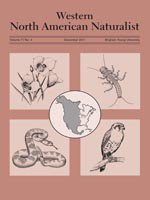The distribution and geographic range of Greater Sage-Grouse (Centrocercus urophasianus) have been reduced by 56% since European settlement. Although loss and fragmentation of sagebrush (Artemisia spp.) habitats have been cited as the primary causes for the decline of the species, degradation of existing habitat also has been considered an important factor. Guidelines for protection and management of breeding and winter habitat have been developed for land managers, but winter habitat use has not been thoroughly described throughout the species' range, particularly for the western portion of its range in Oregon. We examined vegetation-type selection and use by Greater Sage-Grouse during winter (Nov–Feb) at 3 study areas in southeastern Oregon (1989–1992). Elevation gradients and vegetative communities differed among these 3 areas. Our objective was to examine the geographic variation in the selection and use of various vegetation types during winter, when sage-grouse distributions may be most restricted. We described differences in vegetation structure at the microhabitat scale among 3 areas and differences in vegetation-type selection at the macrohabitat scale. We found that the use of mixed sagebrush (basin big sagebrush [Artemisia tridentata tridentata]) and other shrubby vegetation types by sage-grouse was greater than expected at all 3 study areas. At the low- and high-elevation study areas, low sagebrush (Artemisia longiloba) vegetation types were selected more often than expected at random, which was contrary to our original hypotheses. Basin big sagebrush vegetation types were used in proportion to their availability at the 2 low-elevation study areas, and big sagebrush steppe was used less than available (avoided) at the low-elevation areas; these results were contrary to our original predictions. Such differences in selection among the study areas in southeastern Oregon create additional challenges for land managers, who are charged with managing habitats for sage-grouse use during autumn and winter in this portion of the species' geographic range.
How to translate text using browser tools
1 December 2011
Habitat Selection by Greater Sage-Grouse During Winter in Southeastern Oregon
Christian A. Hagen,
Mitchell J. Willis,
Elizabeth M. Glenn,
Robert G. Anthony
ACCESS THE FULL ARTICLE





